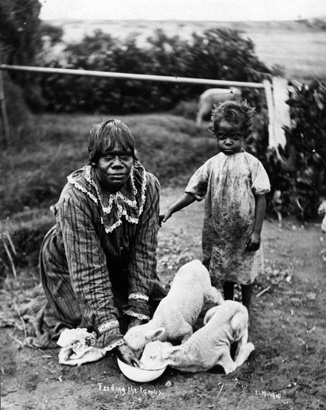|
Pastoral
Throughout the twentieth century the Western Australian pastoral industry was an integral part of the story of the
land. The industry was an extremely influential sector in the local economy. Although a pastoral industry had been established in the colony's South West in the middle part
of the nineteenth century, prior to the development of wheat and mixed farming in that region, it was not until the end of the nineteenth century that cattle and sheep were introduced to Western Australia's north, northwest and
eastern interior.
The story of that pastoral industry is told here in three sections:
By the time of Federation in 1901 sheep and cattle stations had spread from the
Kimberley to Esperance and as far east as Eucla. Pastoralists occupied vast tracts of land in the Goldfields, Murchison, Gascoyne and Pilbara regions under lease from the
government. Supplies of artesian water allowed stock to be run on stations in these areas of intermittent or extremely low rainfall.
From the time of the establishment of a Western Australian pastoral industry many pastoralists relied on an Aboriginal work force they recruited, sometimes unwillingly,
from among the land's traditional owners. Their participation established and maintained this industry.
|











